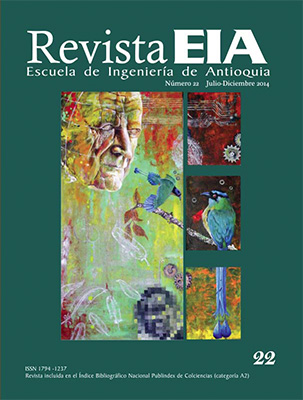EVALUACIÓN DE LA EFICIENCIA ENERGÉTICA EN LOS HORNOS TRADICIONALES DE CURADO DE TABACO*
EVALUACIÓN DE LA EFICIENCIA ENERGÉTICA EN LOS HORNOS TRADICIONALES DE CURADO DE TABACO*


This work is licensed under a Creative Commons Attribution-NonCommercial-NoDerivatives 4.0 International License.
Copyright statement
The authors exclusively assign to the Universidad EIA, with the power to assign to third parties, all the exploitation rights that derive from the works that are accepted for publication in the Revista EIA, as well as in any product derived from it and, in in particular, those of reproduction, distribution, public communication (including interactive making available) and transformation (including adaptation, modification and, where appropriate, translation), for all types of exploitation (by way of example and not limitation : in paper, electronic, online, computer or audiovisual format, as well as in any other format, even for promotional or advertising purposes and / or for the production of derivative products), for a worldwide territorial scope and for the entire duration of the rights provided for in the current published text of the Intellectual Property Law. This assignment will be made by the authors without the right to any type of remuneration or compensation.
Consequently, the author may not publish or disseminate the works that are selected for publication in the Revista EIA, neither totally nor partially, nor authorize their publication to third parties, without the prior express authorization, requested and granted in writing, from the Univeridad EIA.
Show authors biography
RESUMEN
El cultivo del tabaco se ha convertido en uno de los más importantes en Colombia, generando empleo a mano de obra calificada y no calificada. En la poscosecha del tabaco se han detectado varias problemáticas a resolver, una de ellas la concerniente al alto costo del combustible empleado en los hornos de curado. Por ello, se realizó una evaluación al intercambiador de calor tradicional tipo hornilla para determinar la eficiencia en el uso del combustible. La información obtenida deja en evidencia la gran dificultad que se tiene con este sistema de transferencia de calor por convección natural para mantener temperaturas estables al interior del horno, generando condiciones ambientales que se alejan considerablemente de las previstas para este proceso, dependiendo estas variaciones, en gran medida, de la frecuencia de cargue de la hornilla, encontrándose además, que la eficiencia en el aprovechamiento de la energía entregada por el carbón es menor del 10 %.
ABSTRACT
Tobacco has become one of the most important crops in Colombia, generating employment for both skilled and unskilled workers. In the post-harvesting of tobacco were found several problems to be solved, one of them concerning the high cost of the fuel used in the curing ovens. Therefore, an evaluation to the traditional heat exchanger, burner type, to determine the efficiency of the fuel used, was performed. The information obtained shows clearly the great difficulty that we have with this system of heat transfer by natural convection to maintain stable temperatures inside the oven, creating environmental conditions that deviate significantly from those required for this process, depending these variations largely on the frequency of loading of the burner, we also found that the use efficiency of the energy delivered by coal is less than 10 %.
Article visits 294 | PDF visits 208
